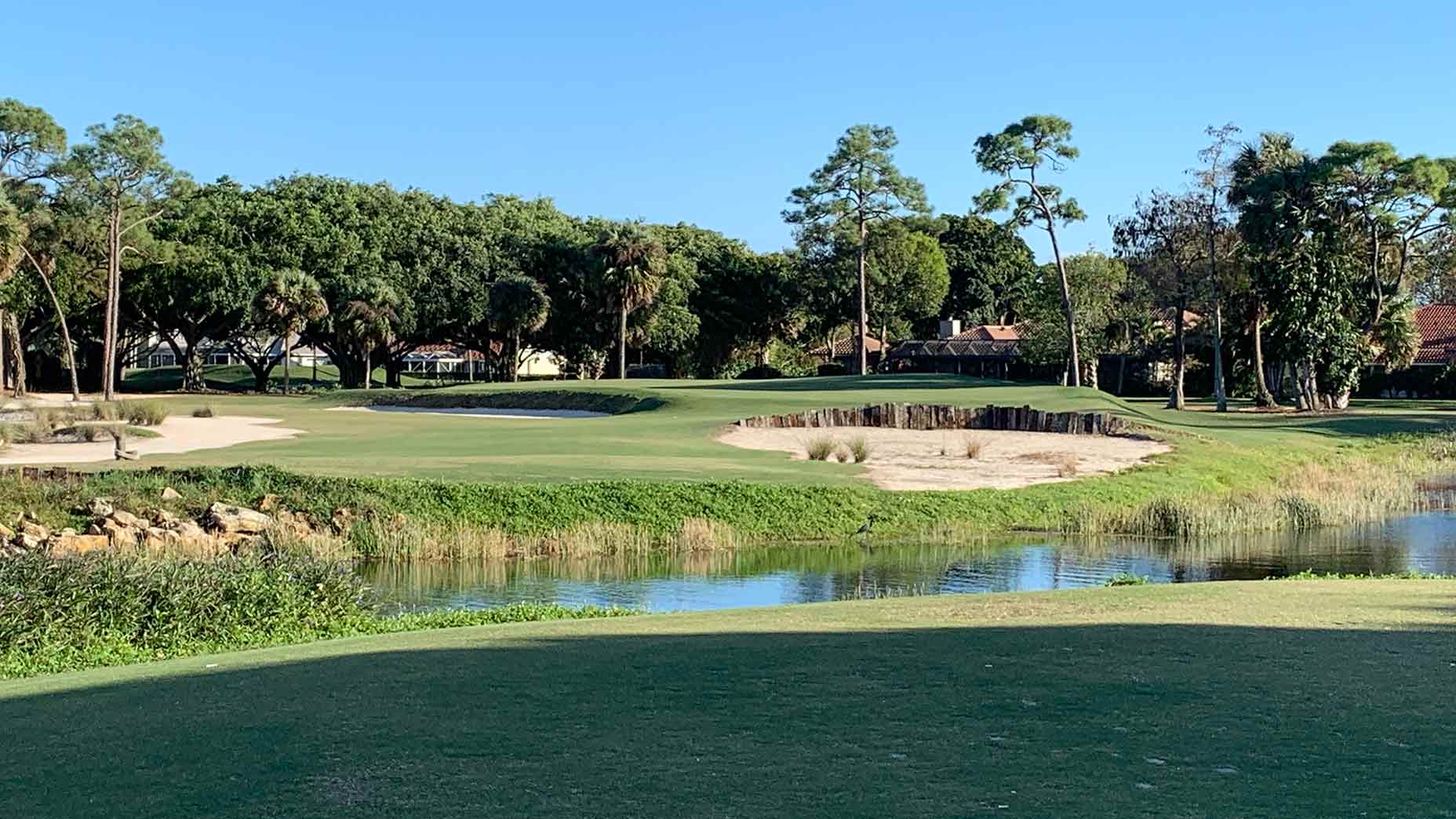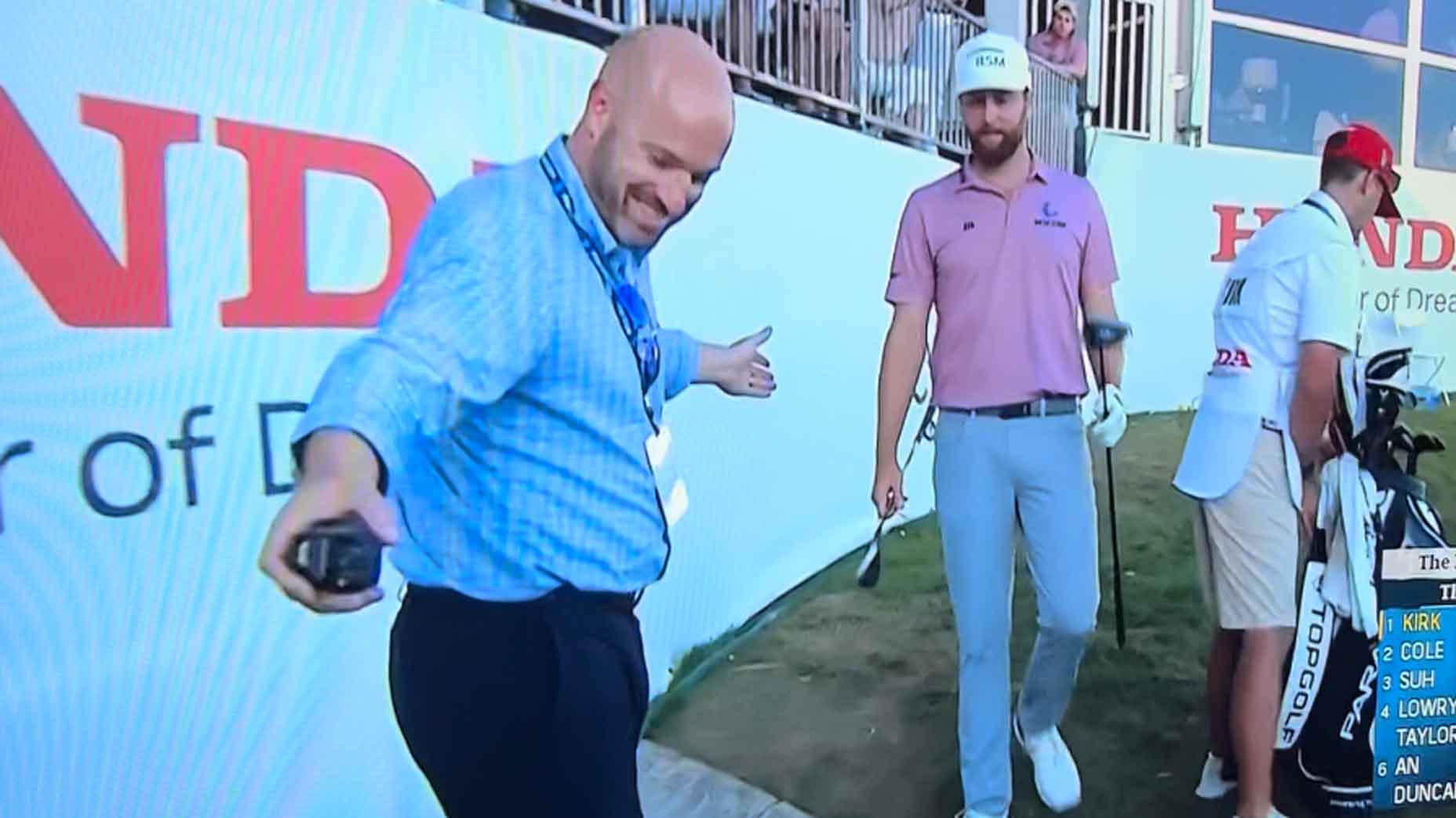PGA National Resort occupies an intriguing space in the golf-destination landscape. It is not necessarily all about golf, like the Bandon Dunes’ of the world. But it’s also not a resort that just happens to have a golf course. It’s clearly about golf when you’re there, but it’s impossible to miss the big pool with cabanas, the newly reinvented spa and the upscale rooms.
The biggest attraction for resort guests is, and probably always will be, the Champion Course, which hosts this week’s Honda Classic in Palm Beach Gardens, Fla. The course routinely plays as one of the most difficult on the PGA Tour and is home to the infamous Bear Trap (Nos. 15, 16, and 17). It’s a grueling challenge for any single-digit handicap, let alone the average weekend golfer.
But not everyone wants to make double bogeys all day. You see, almost all of PGA National feels like a traditional “resort and spa.” The course offerings, of which there are many, have been mainly conventional, but with new ownership and an ongoing $100 million renovation project, the resort’s thinking outside the box and seeing the value in golf activities outside of full 18-hole courses. That’s where golf architect Andy Staples comes in.

The resort recently opened two new courses, both designed by Staples. The Staple Course is a nine-hole short course, perfect for afternoon loops after taking a beating on the aforementioned Bear Trap. But the real innovation comes with Staples’ other invention, The Match Course. Despite being known as a resort that has hosted numerous PGA Tour events, a PGA Championship and even a Ryder Cup, The Match Course fights against almost every norm in American golf. There is no par and no rating. There is no rough and the course can play anywhere from 3,400 to 5,800 yards. It weaves through the housing developments of the greater PGA National community but does not play like any other development course in the area, let alone on the property.
Where to start? Naturally, at the tee box. Or lack thereof.
No, there are no tee boxes on The Match Course. Instead, there are just large swaths of land that make for teeing areas. The idea is, whoever won the last hole decides where you tee off from next. The scorecard shows the maximum and minimum yardages the hole can play, but outside of that, you are directionless.
“I didn’t want to get anybody talking about yardage,” Staples said. “I didn’t want to actually define any tees.”
This takes some getting used to but comes with many advantages. You can shorten a “par-4” however much you need to make it drivable. You can make holes longer and more challenging, or short enough to reach in two. If one opponent’s advantage is in their long irons, maybe their strategy is to lengthen the holes of their choosing. Picking your own starting point gives the course a flexibility that a standard tee box never could.
Staples told me he had an idea about no tee boxes when they were starting out, “But it wasn’t until we actually got under construction and said, ‘OK, this is where the design is headed, ownership, are you ready to go all in?’ And they said, ‘Yes, go for it.’”
There were concerns, questions and discussions along the way, but the fact that the resort was willing to take a risk on something new, well, what’s not to love about that?
Template holes with a twist
The other great part of playing The Match Course is getting a taste of template holes. Staples had a lot more limitations to work with here than Macdonald and Raynor did when they were building their masterpieces. There was a golf course here before, The Squire Course, and the holes weaved through different housing communities with small corridors.
“The templates are almost always reserved for small, high-end private country clubs that don’t have homes everywhere,” Staples said. “I felt like I held true to what the strategy of how those holes were supposed to play.”

The first template is the Short 2nd hole, with the iconic massive thumbprint in the middle of the green and difficult bunkering protecting the front, including railroad-tie walls to make any shot more difficult. The 3rd hole is a slight dogleg right, but as Staples intended, the real challenge comes when you arrive at the green.
“I’m a firm believer that the strength of any great golf course is in the green design and the concepts within the greens themselves,” he said. Here, the massive Lion’s Mouth green makes the short approach shot significantly more demanding.
The par-3-length 4th is Staples’ attempt at the Eden hole from St. Andrews. No. 7 — “My attempt at the Leven, if you will,” Staples said — also includes Staples’ attempt at the inverted-bunker concept, which makes any approach blind from the right side of the fairway. Sometimes the small corridors make the course feel overly difficult, but there is always strategy and different options to attack each hole. They are also short enough to take less club off the tee and still have a manageable approach.
I asked Staples if doing his rendition of templates made him nervous, and if there were any holes in particular that he worried about.
“I was worried about all of them; I’ll be honest,” he said. “Once I started doing them, I got nervous that I was actually doing them well and doing them to the point to where people really felt like they were good.”
When I interviewed him months ago during the construction process, he seemed less sure he was going to lean into the templates idea, but he built them his way. The back nine starts with a bang with Staples’ rendition of the Road Hole. A wide and delicately narrow green is guarded by a devilish bunker on the front.

“There are some big pine trees off the tee that kind of serve as my Old Course Hotel,” Staples said.
No. 11 is an aggressive Redan with a kick-slope working the ball from right to left. It’s one of Staples’ favorites.
“They let me build a green that is basically 50% unpinnable,” he said, “which every good Redan hole is like.”
The 12th is another favorite. It’s a difficult short par-4-length hole, with a perched green and a Sahara bunker in the landing zone you need to clear. If you bail too far left there’s a coffin bunker built into a large hill. The challenge isn’t over once you find the green, as there are several waves you must navigate if you don’t stick it close. The 15th is one of the more fun holes to play, featuring Staples’ take on a Punchbowl green. Large mounding in and around the green funnels everything to a better spot than where you initially hit it, but still doesn’t guarantee an easy putt.
The finisher is a par-3-length hole with a huge Biarritz green. The swale splitting the green into a front and back portion is several feet high and finding yourself on the wrong side or at the bottom could make a three-putt likely.
‘If you’re out of the hole, go to the next one’
So, there is no par to play against here. What do you do? There’s only one choice — play against your opponents.
“I spent more time than I ever have on the history of match play and how it really began, why it wasn’t something that really caught on here in the United States,” Staples said. “I actually came up with the preferred games I wanted to play.”
Match play might be having a small renaissance in the U.S., but the traditional golfer still has trouble leaving an unposted score behind. When it’s all you’ve ever known, picking up your ball when you’re out of a hole can feel like a sin.
“The golf industry has done a very poor job of getting the people that come into the game aware of different forms of golf,” Staples said.
Part of golf’s greatness is its malleability and the different ways it can be enjoyed. It was fun to be pushed into trying something new, especially when I knew I’d be spending the next day on the Champion Course, slashing out of deep rough and fighting for pars.

As for early reviews? They are strong, but some people always need convincing.
“Everybody that’s very traditional is very suspicious as to whether or not this is something that’s good,” Staples said. “‘Is it long enough? Why doesn’t it have a rating? Why can’t I record a score for my handicap?’”
I guess my answer, and I think Staples would agree with this sentiment, is why not? Why does a golf course have to have those things? Why must it be a certain length? The thing I care most about a golf course is whether it was a fun and unique experience. I think most would be hard-pressed to argue against either of those here.
But enough of what The Match Course doesn’t have.
“I felt like I pushed envelopes on things that I probably wouldn’t normally have pushed and used the idea of match play as, I hate to call it an excuse, but I mean that positively,” Staples said.
The Match Course is wacky with humps, bumps, sand bunkers, grass bunkers, mounds, hills, moguls, water and anything else you can think of. The greens have some severe slopes, and you can find yourself in some intensely tricky situations. And the freedom to create all of this stemmed from the lack of a rating and a focus on match play. When score doesn’t matter, the difficulty or perceived “fairness” of a hole becomes less important.
“If you’re out of the hole, go to the next one. Don’t complain it’s [too hard] because you four-putted or three-putted,” Staples said. “You just lost one hole, go to the next one and go choose the next tee and go win that hole.”
Mistakes, misjudgments, or dumb decisions don’t cost you a whole round here. They cost you, at most, one hole (at least at a time). Imagine the freedom to take on a difficult pin or try to drive the green knowing a triple bogey doesn’t make the day a failure? It just means you’re 1 down.










